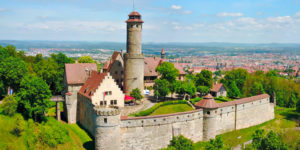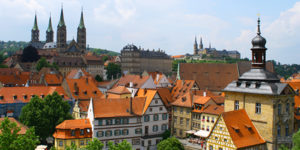In 1489, Bamberg’s Prince-Bishop Heinrich III Groß von Trockau announced a decree to ensure the quality of beer, for which nothing but water, hops and malt may be used to brew good beer. Bamberg had its “purity law” – even before the Bavarians, who decided in 1516 for a similar regulation.
If you speak about the purity law today, then that is only half the truth. It was not only about the purity of beer, but also about a much more significant background: in the same decree of the prince-bishop, the taxation of beer was newly regulated. This beer tax, the so-called “Umgeld”, soon became the most important tax revenue of the state. The prince-bishops as sovereigns had a strong interest in supplying their subjects with good beer and at the same time collecting taxes for the drink. The generous granting of brewing rights by the prince bishops was the reason why there were so many breweries in Bamberg and the surrounding area – and still are today.
The prince-bishops were also not averse to a good drink and operated two of their own state breweries in Bamberg. One of them was the princely “Braunbierhaus”, from which the “Klosterbräu” later emerged. Its origin dates back to the year 1533, as the numbers above the archway show. With the secularization the house was sold to bourgeois barrel makers. In 1851 the brewery came into the possession of the Braun family, and since 2017 it has been run by the Wörner family, who run two further breweries in the Gaustadt district. In addition to three seasonal Bock beers and one wheat beer, Klosterbräu also serves three other types of beer. Klosterbräu, which was never connected to a monastery, is still Bamberg’s oldest existing brewery today.









